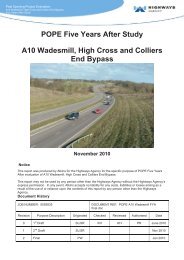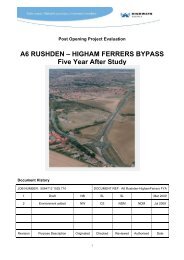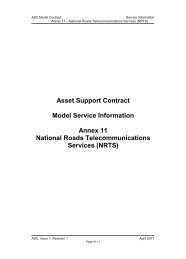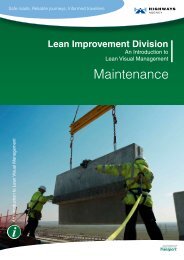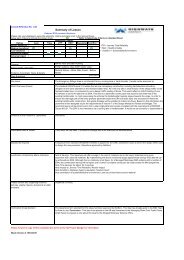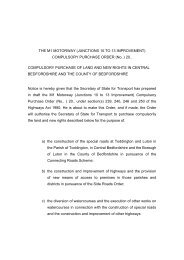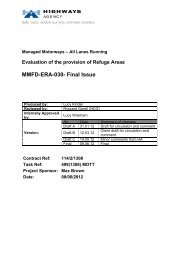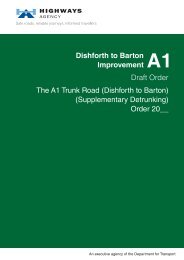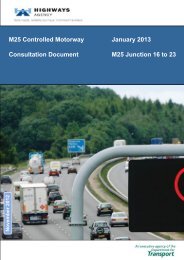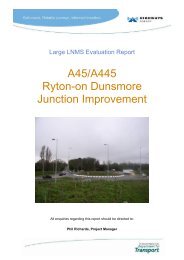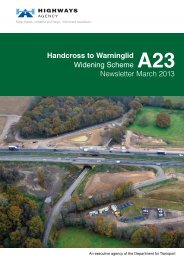A1(T) Elkesley Junction Improvements - Highways Agency
A1(T) Elkesley Junction Improvements - Highways Agency
A1(T) Elkesley Junction Improvements - Highways Agency
Create successful ePaper yourself
Turn your PDF publications into a flip-book with our unique Google optimized e-Paper software.
According to the DMRB (HA213/08) the area of potential impact of noise is within600m of affected roads. The study area for potential vibration impact is within 40m ofaffected roads.The proposed scheme is not expected to produce changes in traffic flow or traffictype, such as the percentage of heavy goods vehicles. The change in noise due totraffic, which will result following completion of the scheme, will be due to an increasein traffic speed as well as the introduction of new slip roads to access the local roadnetwork.• Sensitive Receptor LocationsFaçade noise levels have been specifically predicted at nine identified residentialproperties which would be directly affected by noise from the <strong>A1</strong>(T). These arelocated both within <strong>Elkesley</strong> itself and at more isolated locations in the surroundingarea. Figure 3.1 shows the receptor locations used in this assessment. Noise contourmaps have been produced covering these nine receptors, which all lie within 600 mof the <strong>A1</strong>(T).Sensitive receptor locations also include areas or locations that are especiallysensitive to noise, for example community facilities, public rights of way anddesignated areas (e.g. Areas of Outstanding Natural Beauty, National Parks, andSites of Special Scientific Interest (SSSI).The following sensitive receptors for this scheme have been identified:• St. Giles Church – High St. – 107 m from <strong>A1</strong>(T)• <strong>Elkesley</strong> Primary School – off Headland Ave. – 311 m from <strong>A1</strong>(T)• <strong>Elkesley</strong> Memorial Hall – off High St. –187 m from <strong>A1</strong>(T)Locations that have the potential to be affected to a greater extent by vibrationimpacts include occupants of hospitals, education establishments, and laboratoriescontaining sensitive instruments. It is also prudent to consider areas or features ofecological, archaeological, or historic value within the study area.Within the scope of the noise model constructed all properties within the study areahave been assumed to be 6 m in height. All receiver points in the noise model havebeen calculated at 1.5 m in height. The intervening ground between the modelledroads and receiver points has been assumed to be hard and reflective and be subjectto a positive wind vector from source to receiver.9.4 Baseline EnvironmentAmbient Noise SurveyWhilst within a “Simple” level assessment monitoring is not specifically required it canbe undertaken where deemed appropriate.Within the scope of this assessment noise monitoring was considered necessary.The purpose of the monitoring was to establish noise levels for the verification of theresults of the noise model. The monitoring undertaken is representative of the noise76



